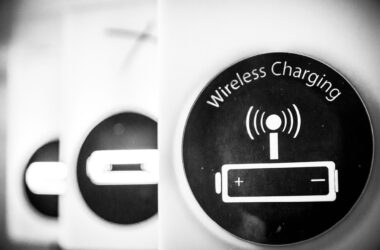Introduction
In the high-octane world of cycling, where adrenaline courses like a ravenous river and the rush of wind is your constant companion, there’s a new player revolutionizing safety and style. Meet the smart bike helmet, an ingenious marriage of technology and practicality. This high-tech bike gear is no ordinary helmet; it’s a game-changer. With built-in lights and turn signals, it’s a beacon of safety in the twilight urban jungle and a guide through the sprawling cityscapes. Buckle up as we venture into the heart of this thrilling evolution, where cycling gear meets the cutting edge of tech innovation.
Reimagining Cycling Safety with Intelligent Bike Helmets
Cycling has embraced the tech revolution, resulting in the birth of Smart Bike Helmets. These innovative headgears aren’t just about protecting your head; they are a leap forward in cycling safety equipment, designed to enhance your visibility and communication on the road. Let’s delve into the nuances of these high-tech bike gears and how they are making the cycling experience safer and smarter.
How Does Smart Bike Helmets with Built-in Lights and Turn Signals Work?
Understanding the technology behind smart bike helmets can help us appreciate these innovative devices more fully. With various tech-driven features, smart bike helmets are designed to provide the rider with increased safety, visibility, and communication while cycling.
Integrated Lighting System
The cornerstone of these smart helmets is their integrated lighting system. This system consists of a series of LED lights embedded into the helmet’s structure. The lights are strategically positioned at the back and sometimes the front of the helmet to provide maximum visibility.
For the built-in lights, the LED technology is often utilized due to its power efficiency and high brightness. These lights serve two primary purposes: to illuminate the path ahead for the cyclist and to alert other road users of the cyclist’s presence. This dual role enhances the safety of cycling, particularly in low light conditions or during night-time.
Turn Signal Indicators
The other vital feature in smart bike helmets is the turn signal indicators. Much like the indicators found on motor vehicles, these lights blink to show which direction the cyclist intends to turn. This functionality enhances road communication between the cyclist and other road users, including both motorists and pedestrians, reducing potential collisions.
The operation of these turn signals is made simple and efficient for the rider. Usually, a handlebar-mounted remote or a smartphone application connected to the helmet via Bluetooth is used to control the signals. With a simple press of a button, the cyclist can activate the right or left turn signal, alerting others to their planned maneuver.
Advanced Features
Some smart bike helmets even come with additional features like brake lights. These lights are activated when the built-in accelerometer and gyroscope in the helmet detect a decrease in speed, indicating the cyclist is slowing down or coming to a stop.
Smart helmets may also include other advanced features such as fall detection, which automatically contacts emergency services if the helmet detects a major impact; built-in speakers for music and call functionality; and GPS tracking for navigation assistance and theft protection.
Powering the Smart Helmet
All these features would be meaningless if the helmet’s battery life was short, but manufacturers have considered this. Smart helmets typically come with rechargeable batteries that offer extended use – often enough for a week’s worth of commuting – on a single charge. Charging is as simple as plugging the helmet into a power source using a USB cable.
In conclusion, smart bike helmets with built-in lights and turn signals work through a combination of LED technology, smart sensors, and wireless communication. The resulting device is an efficient, practical, and safety-enhancing piece of cycling gear that makes a cyclist’s journey safer and more enjoyable.
Brightening the Path with Bike Helmets with Lights
One of the significant enhancements in Smart Bike Helmets is the built-in lights. No longer will you have to worry about cycling as the sun dips below the horizon. Bike Helmets with built-in lights ensure that you remain visible to motorists, irrespective of the time of day.
These ingenious devices are equipped with bright LED lights that serve as a beacon for other road users, signaling your presence and illuminating your path in low-light conditions. This is the kind of breakthrough that gives cyclists the confidence to explore without fear, irrespective of the darkness or fog that might otherwise deter them.
Turning the Corner with Bike Helmets with Turn Signals
Adding to the safety features of these smart helmets is another innovation that is turning heads – the turn signals. Much like a car, the smart bike helmets now allow cyclists to indicate their intent to turn, providing motorists with a clear understanding of their direction. This feature amplifies the communication between cyclists and drivers, ensuring smoother and safer transitions during rides.
Bike Safety Lights: From Accessory to Necessity
The bike safety lights embedded in these helmets aren’t just about visibility; they also offer enhanced communication. Synced with handlebar-mounted remotes or smartphone applications, these LEDs can signal turns, slowing down, or stopping maneuvers to alert motorists. With the advent of this technology, bike safety lights have transitioned from being just an accessory to an essential tool for safety.
The Best Smart Bike Helmets: A Look at the Top Picks
Smart bike helmets are carving a niche in the cycling world, offering an impressive blend of safety features, technological advancements, and stylish designs. They are an integral part of next-gen cycling helmets, providing enhanced visibility and better communication with motorists. Let’s explore the top 5 smart bike helmets on the market that are worth your attention.
- Lumos Matrix Helmet: Lumos Matrix is a versatile smart helmet with an eye-catching design and robust safety features.
- Pros:
- Customizable LED matrix on the rear allows users to display different patterns and signals.
- Features turn signal indicators that are controlled by a handlebar remote.
- Front lights enhance visibility from the front.
- Integrated accelerometer to enable brake lights when slowing down.
- Water-resistant design is excellent for all-weather cyclists.
- Cons:
- Higher price range may not suit all budgets.
- The helmet may be slightly heavier than some traditional helmets due to the integrated technology.
- Pros:
- Coros SafeSound Road Smart Helmet: Coros SafeSound Road combines audio technology with smart lighting for an enhanced cycling experience.
- Pros:
- Ear opening sound system allows you to listen to music or take calls while still hearing your surroundings.
- Bright LED tail lights with an automatic day/night light sensor.
- Emergency alert system sends your location to emergency contacts if a fall is detected.
- Lightweight and comfortable design with good ventilation.
- Cons:
- The sound system may not be loud enough for some users in noisy environments.
- The battery life is shorter when using all the features extensively.
- Pros:
- Sena R1 Smart Helmet: The Sena R1 smart helmet seamlessly combines communication features with smart lighting.
- Pros:
- Integrated speakers and microphone allow for mobile calls, music, and group intercom with other Sena helmet users.
- Features built-in tail light for visibility.
- Uses an easy-to-operate app for light and sound control.
- The helmet provides a comfortable fit with good aerodynamics.
- Cons:
- Lacks automatic turn signals, relying instead on manual operation.
- Some users may find the helmet a bit bulky.
- Pros:
- LIVALL BH60SE Smart Helmet: The LIVALL BH60SE offers a good mix of safety, communication, and smart lighting features at an affordable price.
- Pros:
- Equipped with tail lights, turn signal indicators, and SOS alert in case of an accident.
- Walkie-Talkie feature allows communication with other riders.
- Smart app for easy control of lights and features.
- Cons:
- The helmet’s speakers may not provide high-quality sound for music.
- Some users report the fit is a bit tight.
- Pros:
- POC Omne Eternal: While POC Omne Eternal does not offer turn signals, its unique self-powered technology makes it worth considering.
- Pros:
- Features a self-powered front light using Powerfoyle solar cell material.
- Offers a sleek design with a focus on comfort and aero performance.
- Quality construction with an EPS liner for great impact protection.
- Cons:
- Lacks the built-in turn signal feature.
- The front light is not as bright as other models and is more for being seen than lighting the road.
- Pros:
In a market filled with smart bike helmets, these five models stand out for their innovative features, user-friendly design, and commitment to safety. When choosing the right smart helmet for you, consider your specific needs, budget, and how the helmet’s features will enhance your riding experience. Happy cycling!
Why Should You Invest in Next-Gen Cycling Helmets?
With cycling tech and gadgets progressing at an unprecedented pace, investing in a smart bike helmet is more than a smart choice; it’s an investment in safety and convenience. Whether you’re an avid cyclist or a casual rider, these smart helmets provide enhanced safety features, practicality, and peace of mind that makes every ride a more enjoyable experience.
Conclusion
In the vast universe of cycling, innovations are continually being introduced, each adding a new layer of functionality and safety to our rides. Smart bike helmets, armed with built-in lights and turn signals, are now at the forefront of this revolution. By enhancing visibility and augmenting communication between cyclists and motorists, these high-tech headgears promise a safer, smarter, and more enjoyable cycling experience.
Our journey today through the world of smart bike helmets has unveiled the sophistication of these devices. From understanding how they work to examining the top models in the market, we’ve discovered the transformative power of technology in cycling gear. The integration of LED lights and indicators not only illuminates our path but also signals our presence and intentions to those we share the roads with.
Despite their advanced features, the operation of these helmets remains straightforward, with the control of lights and indicators usually just a button press away. Their durable batteries ensure they can serve us well during our cycling adventures without frequent recharging interruptions.
Choosing the best smart helmet involves considering several factors, including safety features, comfort, battery life, and, of course, cost. Our review of the top 5 smart bike helmets offers a glimpse into the best the market has to offer, guiding you towards making an informed decision.
As we pedal into the future, the cycling landscape continues to evolve, with smart helmets playing a vital role in shaping that future. They represent a union of safety and technology, serving as beacons of progress in the cycling world. By adopting smart helmets, we are not just making a statement about our commitment to safety; we’re also embracing the technological innovations that continue to redefine the boundaries of what’s possible in cycling.
Remember that cycling is not just about the destination; it’s also about the journey. With smart bike helmets, we can ensure that our journeys are safer, brighter, and smarter. So, gear up, embrace the future, and pave the way for more exhilarating cycling adventures with smart bike helmets. After all, the future of cycling is here, and it’s brighter and safer than ever before.
As we wrap up our journey through the world of smart bike helmets, we’d love to hear your thoughts. What did you think about the post? Do you have any experiences with the helmets we mentioned, or perhaps there’s a model you think we should have included? Do you have any suggestions, questions, or insights you’d like to share? Please feel free to leave a comment below. Your input is valuable to us, and it helps make our cycling community more informed and connected. After all, the conversation doesn’t end here. It’s only just begun, and we can’t wait to continue it with you. So, don’t hesitate—jump in and join the discussion!









